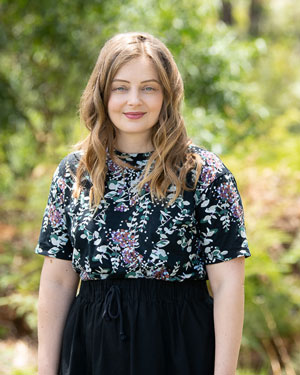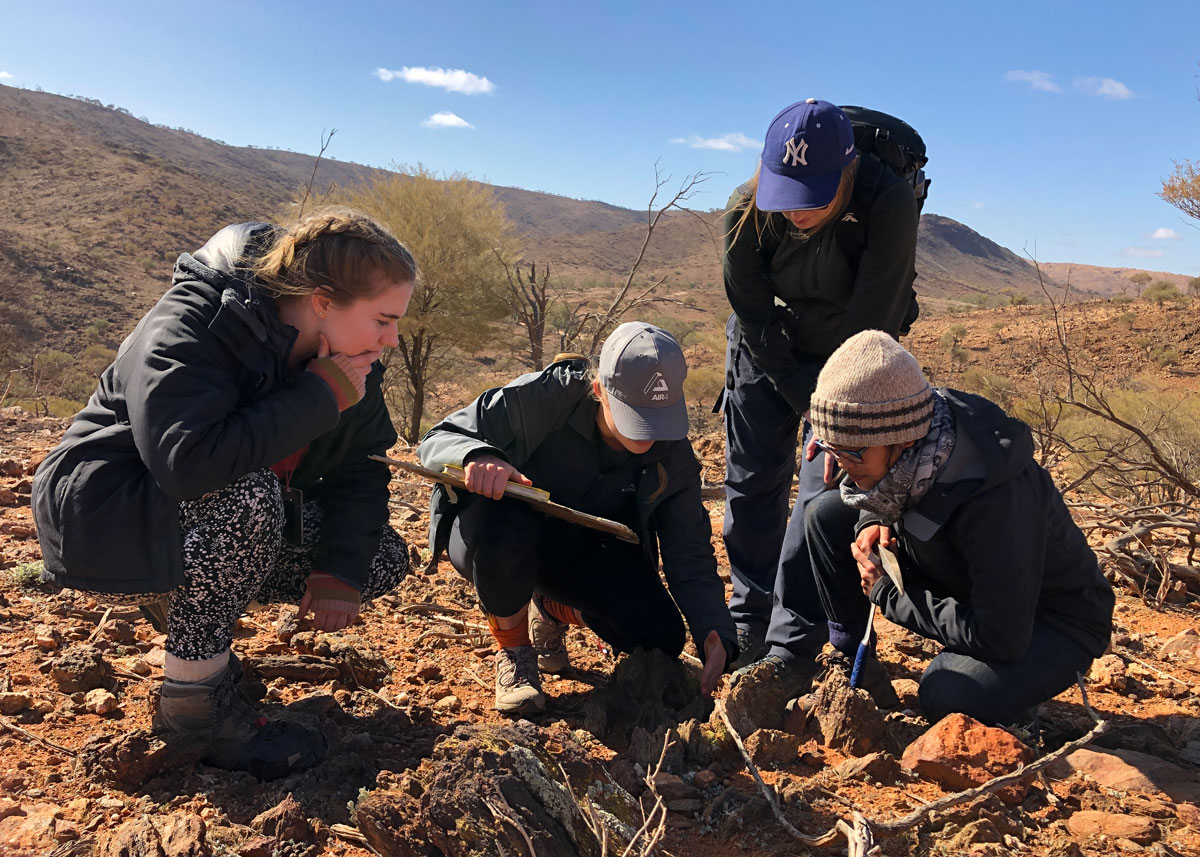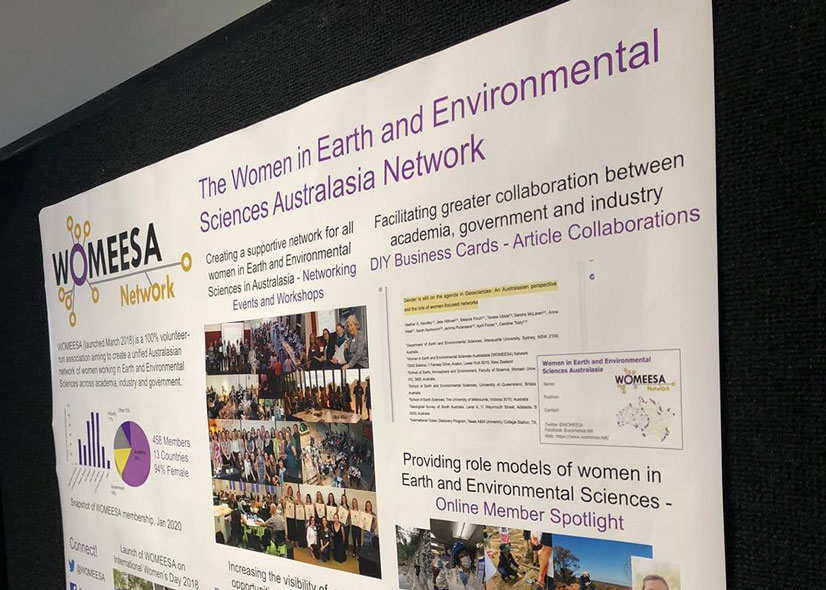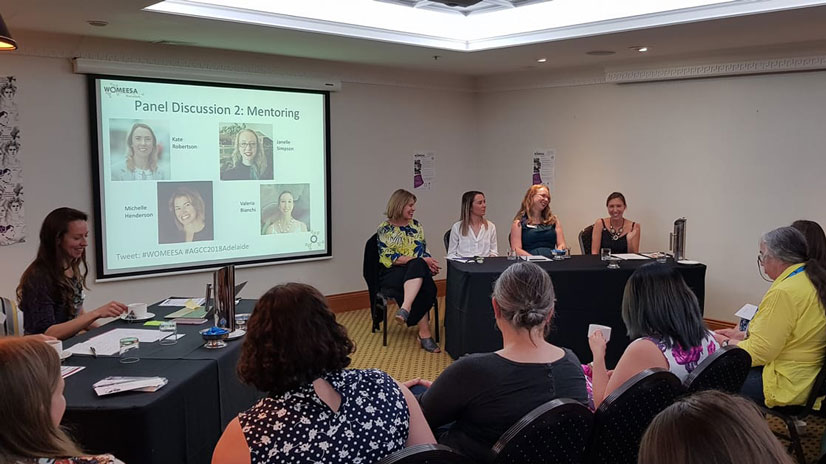
(she/her)
Bindal and Wulgurukaba Country
Twitter: twitter.com/@melaniefinch_
Website: melaniefinch.net
This year I started teaching first year geoscience at James Cook University to a class of about 230 students. When we began the course a lot of my students had no idea what the field of geoscience is since at most high schools it is only a minor focus. It has been wonderful to reveal to my students, week by week, the incredible processes that occur inside and on the surface of Earth. You should see their eyes light up when they realise that in Townsville we live on an ancient, explosive volcanic system! Over the course of the semester they have begun to see the world as a geoscientist does. Suddenly, a rock encountered along a road they walk every day takes on new significance as they recognise fossils in mudstones or mantle rocks carried up in basaltic lava. As I tell my students in week one, this course gives them a time travelling superpower as they become capable of seeing the world as it was hundreds of millions of years ago.
My classroom, like most Australian geoscience classrooms, has a roughly equal gender split. Yet, just a few years after graduation we find that most geologists working in academia and in the minerals industry are men, and the proportion of women decreases further towards more senior levels. The first time I noticed the startling absence of women geoscientists was when I attended a workshop in 2018 where there were 20 invited speakers and all were men. I queried this with the conference organisers and they said that there weren’t very many women working in that field, and the ones they invited had declined. There were quite a few women in the workshop audience, some of whom were at similar career stages to those presenting, but the conference organisers said they hadn’t heard of them prior to the workshop.
The day after that workshop, I decided I had to try to stop this from happening again. Since the conference organisers said they couldn’t find women, I decided I would make a database of all the women in my field so that everyone would have an easy way to find keynote speakers in future. I approached an organisation called Women in Earth and Environmental Sciences Australasia (WOMEESA) to see if they would be interested in collaborating on the idea. It turns out that Heather Handley, co-founder and President of WOMEESA, had been thinking of creating a similar database, so together we created the WOMEESA database of women in Earth and Environmental sciences in 2019. Our database currently has more than 300 women signed up and is used by media outlets, conference organisers and others to find women in our field.
After my first foray into gender equity initiatives, I sought out more information on how else I could drive change in Australasian geoscience. I started the WOMEESA seminar series, which aims to showcase the work of women in Earth and Environmental science and provide greater visibility of women in our field. I also began writing the monthly WOMEESA newsletter, which updates our members on what’s happening in our field and within WOMEESA. Throughout my career I had worked with very few women geologists, so it was incredible to be part of WOMEESA and become part of a supportive network of women who face similar obstacles and challenges.
Flash forward to late 2021 and WOMEESA’s president, Heather Handley, stepped down from her role as president. I leapt at the chance to lead this organisation and I was fortunate enough to be voted in by our members.
Today WOMEESA has almost 1000 members who participate in our vibrant program of seminars, workshops, wikipedia edit-a-thons, and mentoring programs. Perhaps more important than our regular activities is what we do in the background, as we try to achieve our vision to create gender equality in every aspect of Earth and Environmental sciences. That work involves supporting, amplifying and advocating for women and marginalised genders. As part of that, since 2019 I have been doing a presentation roadshow across Australia and New Zealand about why we lose women from Earth and Environmental sciences. The talk highlights what the research indicates is the reasons that women drop out of academia and industry and how these issues can be remedied to create change. It isn’t easy or pleasant to highlight the way that women are excluded from geoscience and push people and organisations within our discipline to change how they operate, but it is vitally important to raise awareness if we are to change the landscape of Australasian Earth and Environmental sciences.
Some have suggested that geoscience is facing an existential crisis: our student enrolments are down and the pandemic saw a number of large geoscience departments shut down. This is telling us that the way we have always done things is not working and we need to change. Geoscience cannot afford to structure its jobs, culture and systems in a way that suits men and excludes women. Creating that change is what WOMEESA is all about.
If you are interested in WOMEESA, you can join us at womeesa.net (it’s free!) or follow us on Twitter @womeesa.



© 2025 Australian Academy of Science